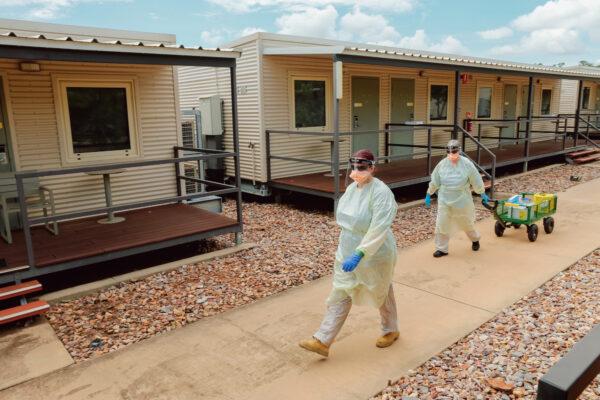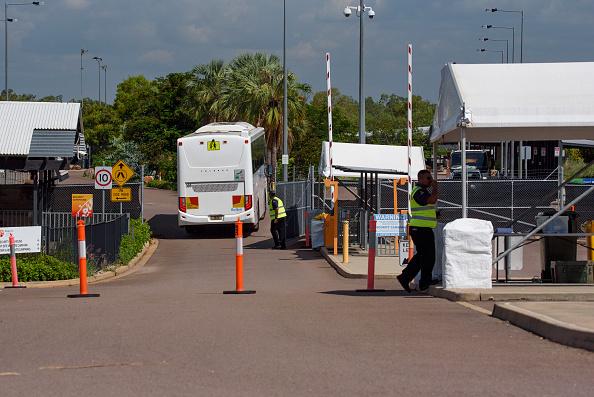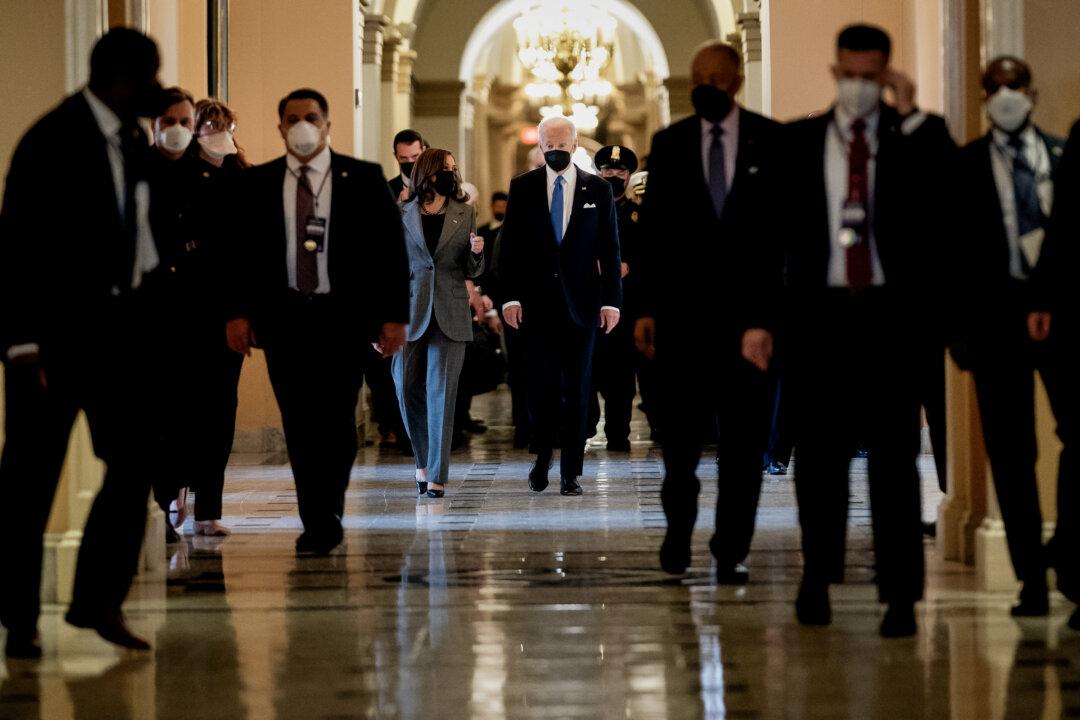An Australian woman has described her time in one of the country’s mandatory supervised quarantine facilities, often reported as “quarantine camps,” as like being “in prison,” in an interview with British news site UnHerd.
Hayley Hodgson, 26, said she was picked up at her residence in Darwin in the Northern Territory (NT), sometime in mid-November, and taken to a mandatory quarantine facility when she lied to police about getting a COVID-19 test after she was identified as a close contact of a confirmed case—her friend.
Authorities then knocked on Hodgson’s door after they had seen her with her friend, and ran the number plates of her scooter to find out where she lived.
It is not clear if authorities identified her and her scooter via CCTV footage. Neither is it clear if the authorities who knocked on her door were contact tracers or plain clothed police officers.
The NT police did not immediately respond to a request for comment.
“They came straight to my house. I didn’t get a call or anything. I literally walked out the front and it was two undercover investigators,” she said.
Hodgson confirmed to the officers that she knew the confirmed case, her friend, and told them the locations she had visited.
“They said, ‘Have you had a COVID test done?’ I said, ‘Yes, I had,’ when I hadn’t,” she said.
“Just because I was so scared in the moment and I had been to one of these quarantine camps before—only literally a month before this. So I know what it was like. I was just really scared. It was just a horrible position to be in and I just lied and said, ‘Look, yeah I have,’ when I hadn’t.”
The investigators then left and called her shortly afterwards to say they looked her up and couldn’t find a record of her test. Hodgson then admitted to them that she had lied about the test out of fear and apologised. She said that they told her to wait at home and someone would come to test her.
“No one came to test me. The next people to rock up at my house were two other police officers. They blocked my driveway,” she said. This time the officers were uniformed police, she said.
Hodgson walked out of her house and asked the police what was going on and if they were there to test her for COVID-19.
“They said, ‘No, you’re getting taken away, and you have no choice, you’re going to Howard Springs. You either come with us now and we’ll put you in the back of the divvy van or you can have a choice to get a COVID cab,'” she said.
She then chose to ride in the “COVID cab” to avoid a $5,000 fine that she said was associated with going in the police divisional van, or “divvy van,” which is a vehicle that can house people under arrest in a separate compartment from the officers.
“Under the Chief Health Officer (CHO) Directions in the Northern Territory, anyone who is a close contact of a person with COVID-19 is required to undertake 14 days of quarantine,” an NT Health spokesperson told The Epoch Times.
“This period includes a COVID-19 testing regime, with tests undertaken upon entry to quarantine, on day five and day 12, with additional testing as required.
“Close contacts must remain in quarantine for the full 14 days regardless of negative test results.”
The NT Health spokesperson said this strategy had saved lives because in some cases close contacts who initially tested negative later tested positive. Their remaining in quarantine for the 14-day period meant they did not spread the virus “throughout highly vulnerable communities.”
Additionally, the spokesperson said that anyone caught breaching CHO directions and putting other Territorians at risk faced a $5,000 fine.
In response to the CCP virus pandemic, Australia’s states and territories declared human biosecurity emergencies allowing each jurisdiction’s chief health officers to issue directives that become enforceable laws, which often override rights granted under the country’s constitution.
The police are then required to enforce compliance with the directives, often giving them the power to issue fines for non-compliance, as well as enter homes and detain people, and remove them to supervised quarantine facilities.

Hodgson told the officers she did not consent to being removed to Howard Springs and stated her preference to self-isolate at home.
Hodgson packed a bag to take to the quarantine facility with the understanding that she could leave as soon as she returned a negative test. However, upon arrival she was informed that she'd have to remain for the entire 14-day mandatory period.
“The whole time I was there I [tested] negative,” she said, later saying she was tested three times.
She was driven to her cabin by people wearing full “hazmat”-style personal protective equipment.
“They literally drop you to your room and they leave you. They don’t come and say anything. They don’t check up. They don’t do anything,” she said.
“You get delivered your meals once a day and you are just left.”

“So this, I’m going to give you a warning, yeah?” The official seen in the video said. “It’s an official warning that you have to stay on your balcony and obey the rules while you’re here.”
In the video, Hodgson is heard challenging the rules as they remind her of them instead of giving her the $5,000 fine.
Hodgson likened being in the quarantine facility, with her every movement being controlled, to prison.
“It’s a horrible feeling. You feel like you’re in prison. You feel like you’ve done something wrong. It’s inhumane what they’re doing,” she said. “You’re so small. They overpower you and you feel like you’re nothing.”
After asking to be allowed to go for a run because she was feeling anxious and “distressed,” Hodgson said she was offered valium.
Hodgson, who has since completed mandatory quarantine, said she has since lost her casual job.
The NT Health spokesperson said the territory is more vulnerable to the CCP virus because it is home for many Aboriginal communities—some of the most vulnerable groups of Australians.
“The (Aboriginal) population has a significantly higher rate of comorbidities and underlying health issues than other Australian jurisdictions.
“It’s demographics are more complex. There are more than 100 languages spoken, and it is home to more than 70 remote Indigenous communities,“ the spokesperson said, citing the territory’s strong border measures as the reason the jurisdiction had been ”largely COVID free.”
“Our health strategy remains one of suppression at this time, while we continue to drive up our vaccination rate and ensure we are as prepared as we can be for when the virus inevitably becomes endemic.”
The person who died was a 76-year-old Aboriginal woman from Binjari, southeast of Darwin, whose residents were recently relocated to Howard Springs to complete isolation.
Their evacuation caught international attention due to unsubstantiated claims that the army was forcibly vaccinating and detaining Aboriginal people.
However, this was refuted by a local Aboriginal health worker, who said residents could not safely isolate due to overcrowded housing—some Binjari residences housed up to 30 people, a common problem in remote Aboriginal communities. He said the army was assisting in transporting them to quarantine at Howard Springs.
There are currently 1,161 people in quarantine in the territory, which has a population of about 246,000.





